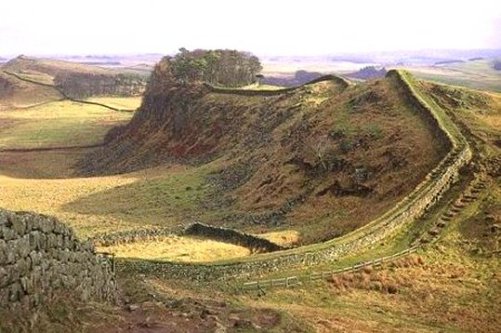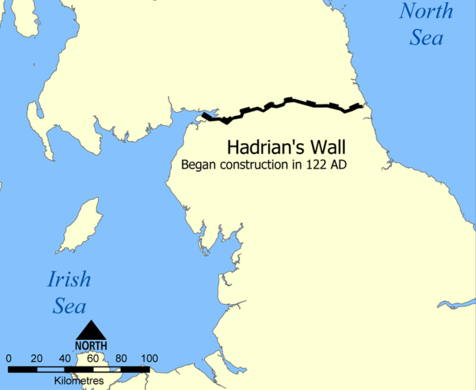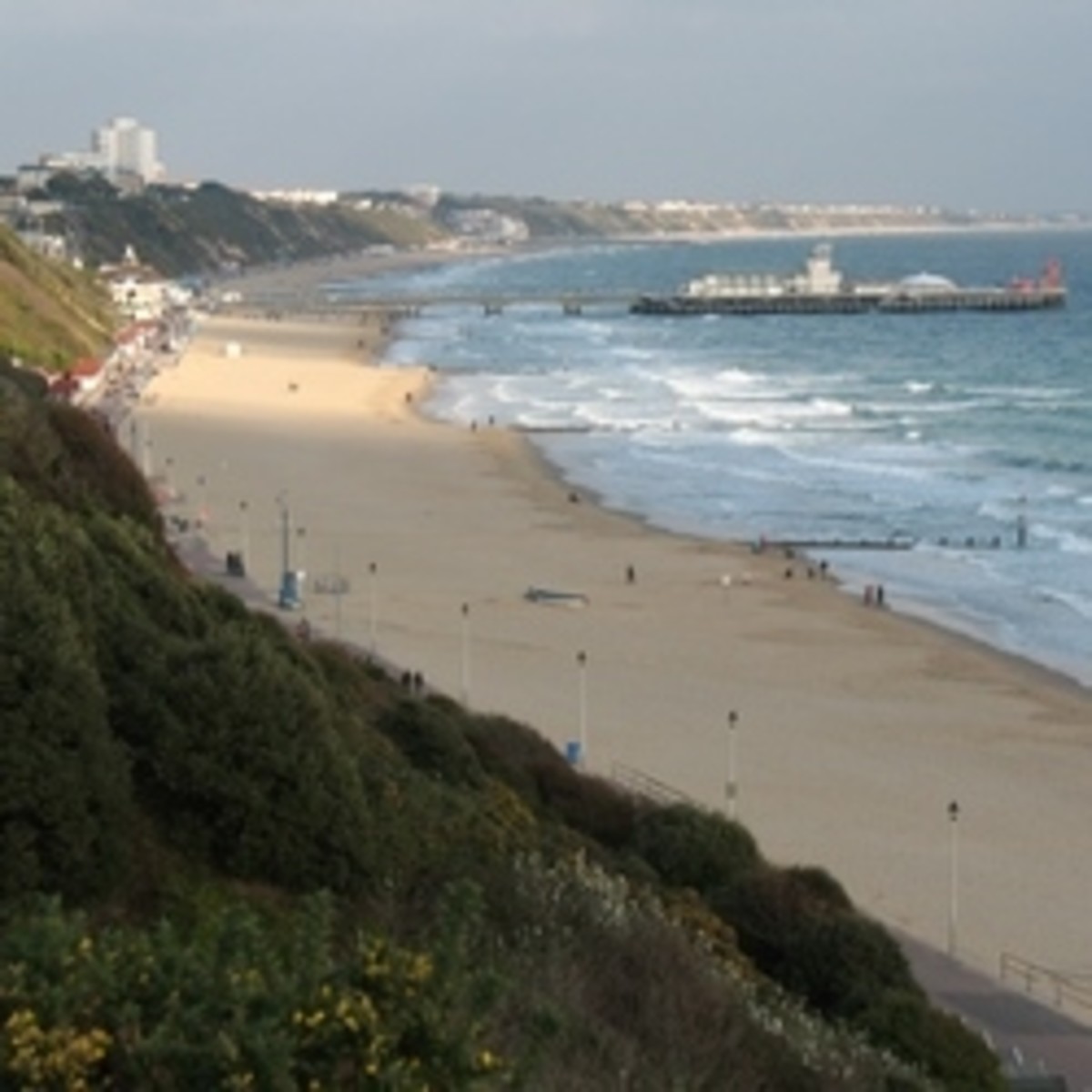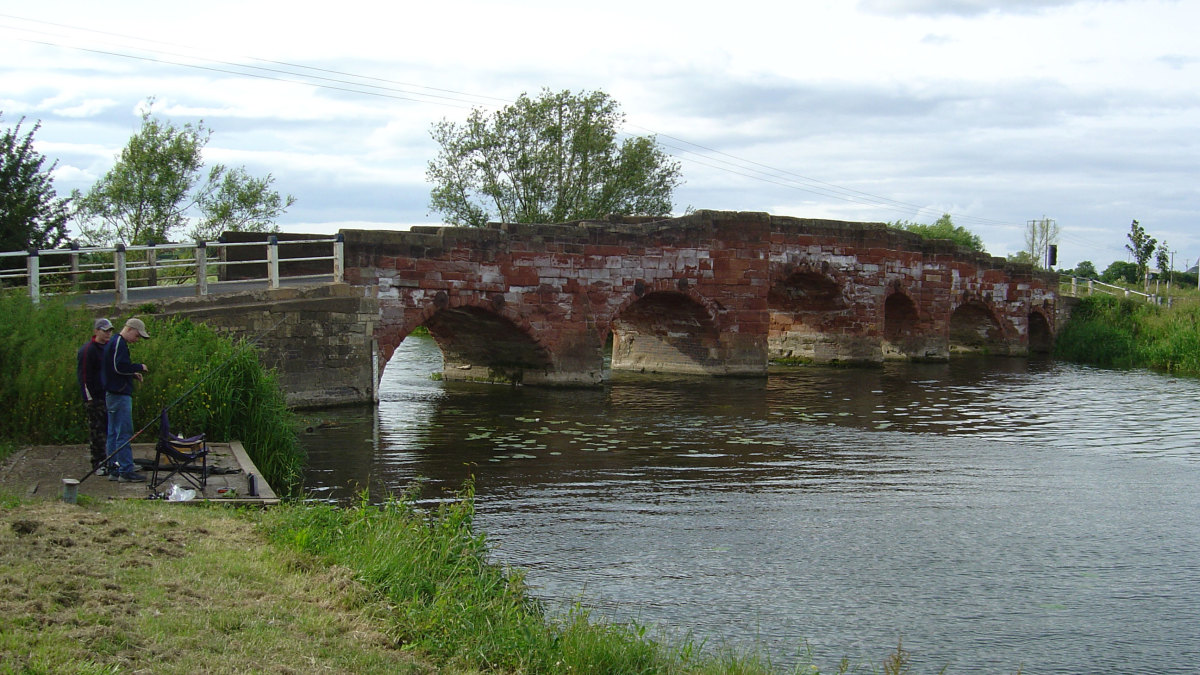Hadrian’s Wall – A Brief History and a Long Walk
The Wall meandering across the coutryside with a milecastle in the foreground

The history of the Wall
Picture the scene; it’s AD 128 and you’re a soldier from the imperial city of Rome, the grandest city on earth and home to architectural pleasures such as the Colloseum, the Servian Walls and the Temple of Jupiter. You have spent your adolescence in the warm Mediterranean climate learning all that a young Roman should from some of the great teachers of the age. However you’re not in Rome, instead you’ve been sent to the most northerly reach of the empire, to a god-forsaken rain-soaked hillside in what is now northern England - over one thousand miles from your comfortable home. You must therefore be thankful for small mercies; and no doubt Hadrian’s Wall would count as one such mercy for a beleaguered Roman in the early second century, presuming that you didn’t wish to be hacked to bits by a disgruntled Scotsman any time soon.
Hadrian’s wall was begun in AD 122 at the behest of the eponymous Emperor of the Imperial Roman Empire – who visited Britain during this year and personally inspected some of the construction - and took around six years to complete. The wall begins in Wallsend on the banks of the River Tyne - an important port now as then – on the North Sea Coast of north eastern England and continues to the Solway Firth on the northwest coast, bisecting the country completely in the course of its route. This distance of 73 miles means that the wall is still impressive today, but in the early second century would have seemed unbelievable to the relatively undeveloped wild reaches of Britain. Hadrian’s Wall was anywhere up to 20 feet high when first built and was almost ten feet wide for most of its length.
Such a massive construction would have acted as a deterrent against uprising from people on either side of it. To the Scots in the north, the wall represented an impassable barrier for all but the largest armies. In Roman controlled England, the locals would have been made equally aware of the military might of their conquerors. On Hadrian’s accession to the Emperor’s hot seat in AD 117, Britain had experienced a number of rebellions, including in the north surrounding the area where the wall was to be built. The wall had forts situated every mile along the wall - known as milecastles – these acted as staging posts along the wall where small parties of soldiers could be deployed and quickly bolstered by defenders from the larger forts and barracks.
Map of northern England and Hadrian's Wall

The modern day Wall
It is testament to the size and quality of the construction that the Wall, abandoned for the final time before the full withdrawal of the Romans for Britain in 410 AD is still almost entirely intact. A little less tall than 1,700 years ago and missing sections through the only city on the Wall’s route, Newcastle upon Tyne (other areas were also grubbed up and used for road building during the 18th century), it still dissects northern England from coast to coast. So impressive still is its span that Hadrian’s Wall was granted World Heritage Status in 1987 and is now largely owned by the National Trust.
In 2003 a footpath was opened along the entire length of Hadrian’s Wall allowing the public to walk 84 miles from coast to coast. This route is typically broke down into six sections by people wishing to take it at a leisurely pace, however no doubt some more hardcore walkers may wish to do it in as little as just three. Despite its length, the walk is not considered particularly challenging as it does not cross any high peaks along its length (the highest is just 1130 feet), but the walker will be treated to some exceptional and spectacular views. The walk is also steeped in some of the history which I’ve briefly covered above and more. Stops can be made at the forts along the route, including the enormous Vindolanda, the site of one of the largest ongoing excavations of Roman heritage anywhere in the world with incredible architecture being uncovered on an almost daily basis. Signs and information is available at each of the sites courtesy of the National Trust (though an entrance fee is required to some sites).
So if you have a week free and would like a holiday with a difference then you can do six days of walking through the beautiful counties of Cumbria and Northumberland and learning a little about the ancient history which contributed so much to Britain and the rest of Europe. The scenery is spectacular, the pubs and inns (in which I encourage you to stay) are comfortable and quaint and the feeling of having completed the trek is utterly rewarding.
Useful links about Hadrian's Wall
- Hadrian's Wall Country
A virtual gateway to Hadrian's Wall Country, including plan your visit, roman site details and a visual gallery. - Hadrian's Wall - Wikipedia, the free encyclopedia
Information on the history, heritage and conservation of the Wall courtesy of Wikipedia - National Trust | Hadrian\'s Wall & Housesteads Fort
Hadrian's Wall & Housesteads Fort in Northumberland was built when the Roman Empire was at its height. Snaking across dramatic landscape, the Wall is one of Britain's impressive ruins. - BBC - History - Ancient History in depth: Hadrian\'s Wall Gallery
A guide to the famous 73-mile Hadrian's Wall barrier - Hadrians Wall
Local Roman history in the northeast of England








